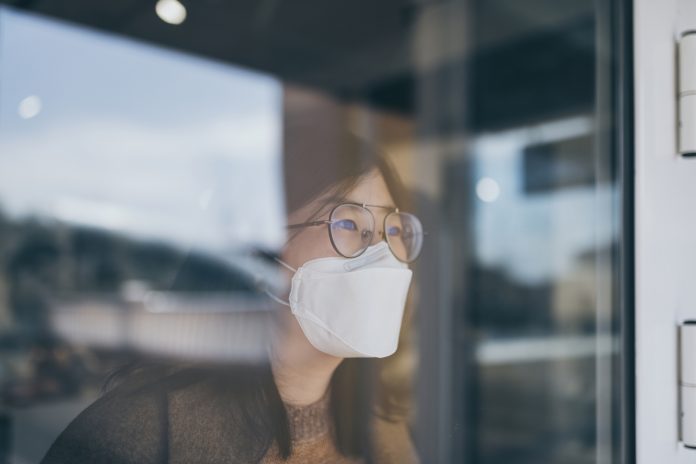
Engineers at MIT and Harvard University report they have designed a novel face mask that can diagnose Covid-19 within about 90 minutes. The masks are embedded with tiny, disposable sensors, based on freeze-dried technology. These sensors can be fitted into other garments and could also be adapted to detect other viruses. A small reservoir of water is released at the push of a button to activate the test. With the current mask, only the wearer sees the results.
The team previously developed this technology for use in paper diagnostics for viruses such as Ebola and Zika. In this study, they showed that the sensors could be incorporated into not only face masks but also clothing such as lab coats, potentially offering a new way to monitor health care workers’ exposure to a variety of pathogens or other threats.
“We’ve demonstrated that we can freeze-dry a broad range of synthetic biology sensors to detect viral or bacterial nucleic acids, as well as toxic chemicals, including nerve toxins. We envision that this platform could enable next-generation wearable biosensors for first responders, health care personnel, and military personnel,” says MIT’s James Collins, senior author of the study.
These cell-free circuit components are freeze-dried and remain stable for many months, until they are rehydrated. When activated by water, they can interact with their target molecule, which can be any RNA or DNA sequence, as well as other types of molecules, and produce a signal, such as a change in color.
This builds on earlier work, when Collins and collaborators developed a cell-free sensor system, known as SHERLOCK, which is based on CRISPR enzymes and allows highly sensitive detection of nucleic acids. More recently, Collins and his colleagues began working on incorporating these sensors into textiles, with the goal of creating a lab coat for health care workers or others with potential exposure to pathogens.
To make wearable sensors, the researchers embedded their freeze-dried components into a small section of synthetic fabric, where they are surrounded by a ring of silicone elastomer. This compartmentalization prevents the sample from evaporating or diffusing away from the sensor. To demonstrate the technology, the researchers created a jacket embedded with about 30 of these sensors.
They showed that a small splash of liquid containing viral particles, mimicking exposure to an infected patient, can hydrate the freeze-dried cell components and activate the sensor. The sensors can be designed to produce different types of signals, including a color change that can be seen with the naked eye, or a fluorescent or luminescent signal, which can be read with a handheld spectrometer. The researchers also designed a wearable spectrometer that could be integrated into the fabric, where it can read the results and wirelessly transmit them to a mobile device.
“This gives you an information feedback cycle that can monitor your environmental exposure and alert you and others about the exposure and where it happened,” says Peter Nguyen, a research scientist at Harvard University’s Wyss Institute for Biologically Inspired Engineering, and a lead author of the study.
To produce their diagnostic face mask, the researchers embedded freeze-dried SHERLOCK sensors into a paper mask. As with the wearable sensors, the freeze-dried components are surrounded by silicone elastomer. In this case, the sensors are placed on the inside of the mask, so they can detect viral particles in the breath of the person wearing the mask.
“This test is as sensitive as the gold standard, highly sensitive PCR tests, but it’s as fast as the antigen tests that are used for quick analysis of Covid-19,” Nguyen says.













